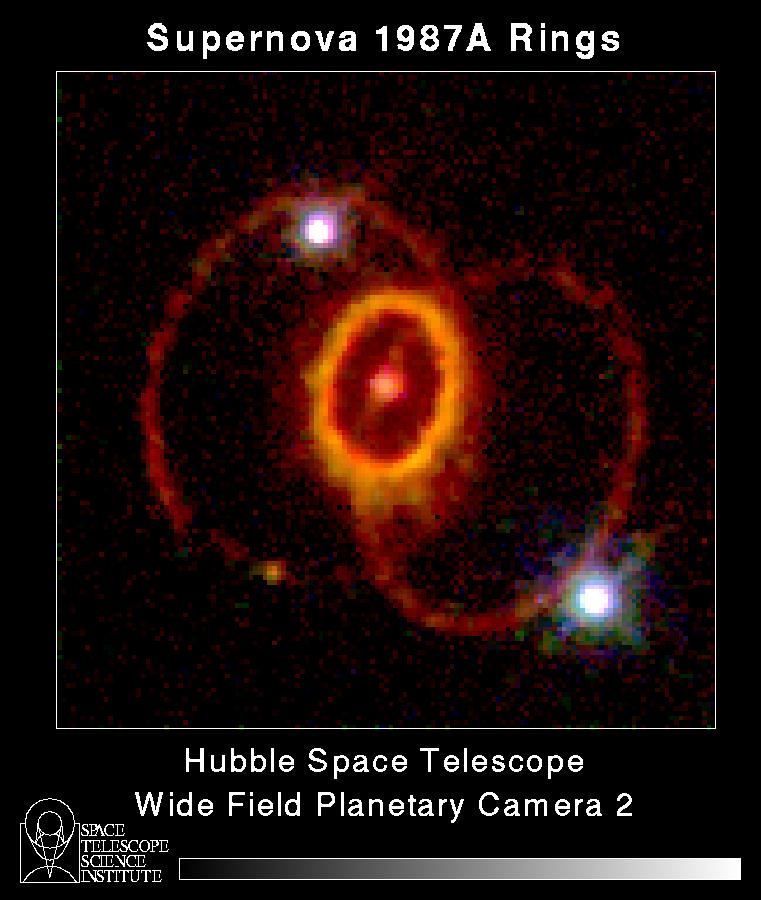Supernovae
How massive stars die?
and
How the Chinese and European
Records of Supernovae Differ?
By
Jesse Barham & Scott Fraundorf

image from STScI public info
link through picture
Introduction
It may seem from our perspective that
when you look up into the night sky that the stars are unchanging, but
consider the relative time scale between a human life and the lifetime
of a star. It takes between millions and billions of years for a star to
move from a cloud of cold dark gas to it's eventual demise when it runs
out of fuel (Kaufmann & Freedman, 520). This makes observations of
stellar evolution relatively impossible on the scale of a human life. However,
within hours of when very massive stars run out of fuel they reveal the
history of their stellar evolution with a luminosity a billion times greater
than our sun (Kaufmann & Freedman, 552). Many were bright enough
to be recorded during the course of human history, despite being relatively
great distances from the Earth. The heat created within the explosion
is the only place in nature known to create all elements heavier than Iron
(Begelman & Rees, pg. 40). This explosion is known as a supernova.
The Chinese saw changes, such as supernovae, in the heavens as indicators
of changes to happen on Earth. Every element on Earth and in our
Solar System, other than hydrogen and helium, was manufactured in the cores
of massive stars or during the massive explosions at the end of their lives
(Kaufmann & Rees, 548).

